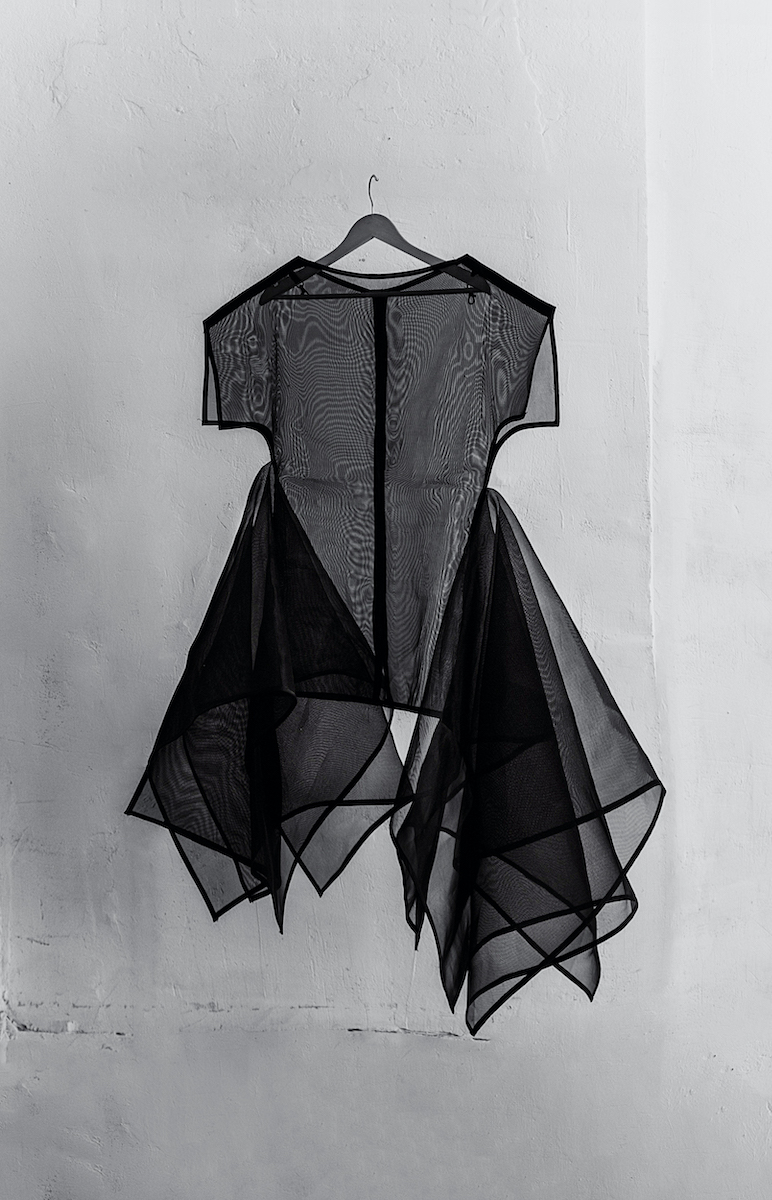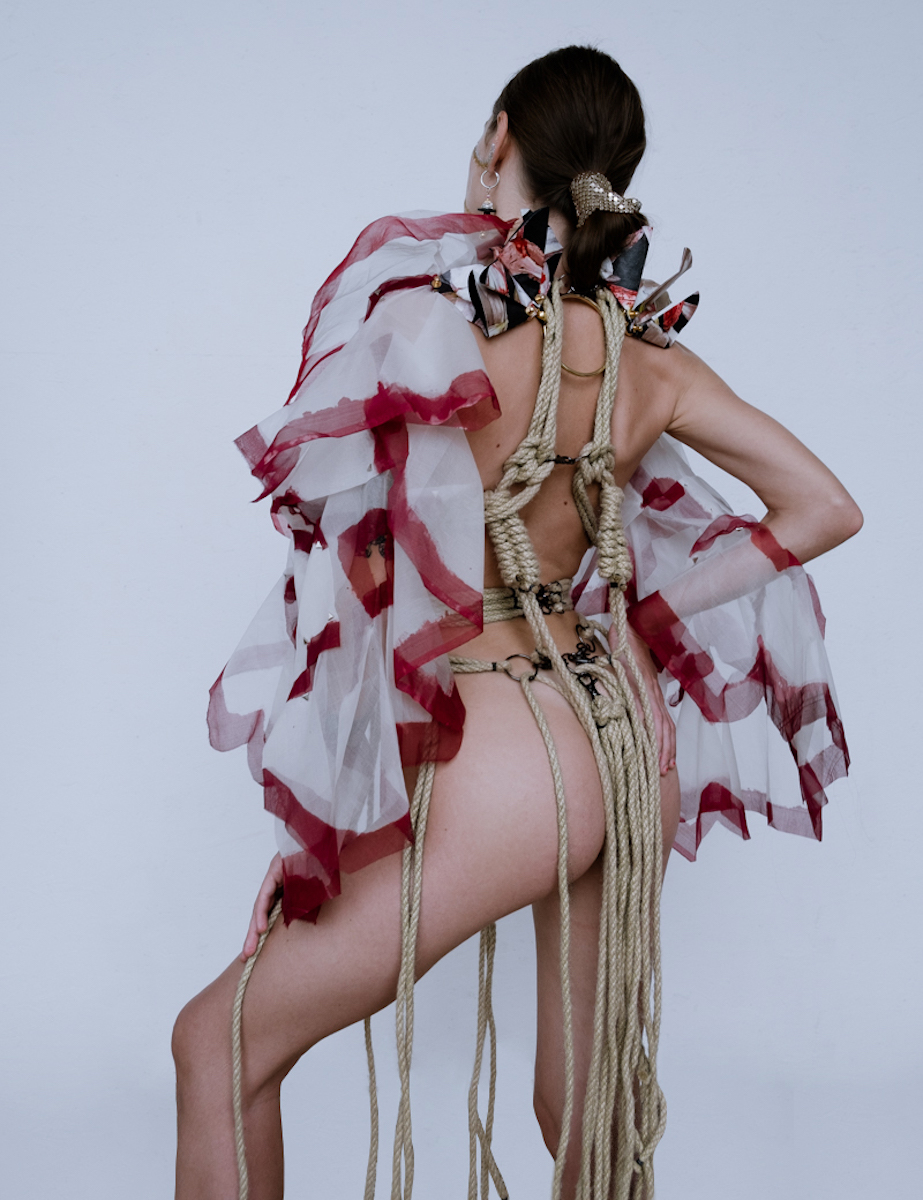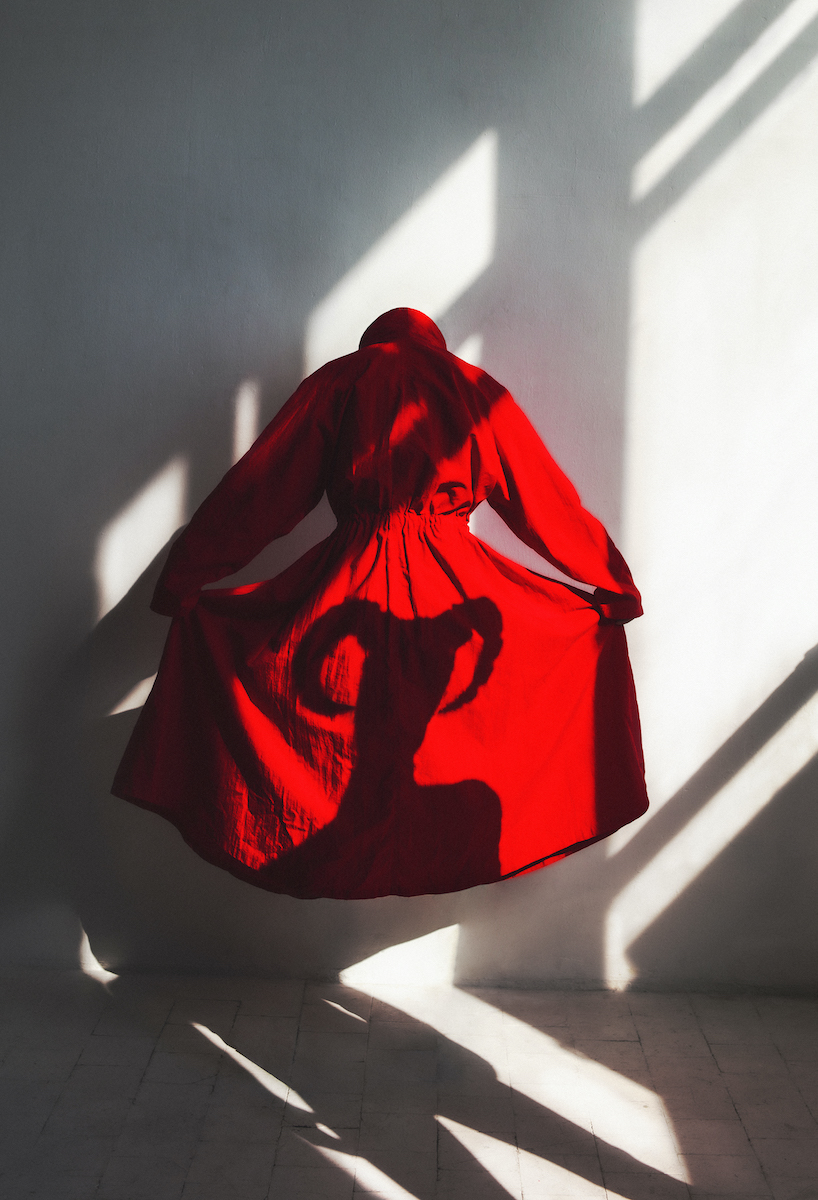Tiger Forgives: the brand creating fetish wear to express unseen personalities
Fetish fashion is often perceived as something on the fringes of creativity: too commercial, too niche, or too strange. Moscow-based designer and founder of label Tiger Forgives, Dahliia Kurmanguzhina, however, uses fetish as a tool for radical self-expression, and as a way to forge an accepting, free-thinking community.
A single glimpse into the world of Tiger Forgives is guaranteed to leave onlookers wanting more. It is as sexual as it is enigmatic, expressive, and filled with curious symbolism hinting horror films, sci-fi, and various fetish subcultures. Here, rope, chains, and latex are the best ways to channel one’s most authentic personality – even if it calls to be a human-sized latex kitten.



Kurmanguzhina has been designing clothes for almost a decade, but she has truly found her calling through celebrating kink and fetish — an interest in her personal life since early on. “At 15, I was very impressed by the first Russian fetish models Agna Devy and Alina Stalina. A couple of years later, I saw Alina in a club toilet: she was putting lipstick on in front of the mirror, wearing a red latex dress — this image has stayed with me ever since. When I was 25, I went to London, and took a trip to buy sheet latex – the first I bought was a few metres of red,” she remembers. “I had this specific hunger for as long as I can remember. I felt constrained and tense because my interests were different from the ones of the very ‘vanilla’ people who were all around me. It made me doubt the authenticity of my desires”.
Kurmanguzhina founded Tiger Forgives in 2016. The name incorporates ancient animal symbolism: “A tiger is a dangerous, tireless, powerful animal who hunts alone. It is one of the few animals that attack people and look at them as prey. A tiger can’t bestow blessings like a god, but it can let its victims go, perhaps as an absolution of their sins. Tiger Forgives, for me, creates an image of a powerful but forgiving creature.”






The designer only works on custom pieces: jewellery, latex, and textile garments. Each piece is not only a collaboration with the client, but a way of telling a story. “Being sexy for me means being yourself 100,000 per cent. In pre-pandemic times, I used to make looks for people for kink parties based on the way they felt about themselves. Before starting the main design work, we talked a lot about their personality, what they liked, and what they aimed to express,” the designer explains. “All orders are personal: people add their ideas and desires, which makes garments and jewellery truly unique. This process is very precious to me”.
At the same time, Kurmanguzhina’s work has a deeper meaning in Russia, where the country’s attitudes towards sexuality and gender remain largely patriarchal and conservative. Tiger Forgives creates a new framework for sexuality – a place to play with gender, power, and the notions of public and private. It is as much about beauty and desire as it is a study of the human body in the current post-digital culture.
“I really admire creatives who explore the complex relationship with physicality in their imagery, like White Voodoo and Hellikisto,” Kurmanguzhina says. “I love sexuality and excessive corporality, an endless process of acceptance and rejection of one’s body, exhibitionism, and vulnerability. It makes you look at the human body from a new perspective. I am also a big fan of Fecal Matter: for me, they’re an example of self-acceptance, confidence in their creativity, and a fresh channeling of their worldview into kink fashion.”



Kurmanguzhina admits that it can be challenging to find your audience and community, both as a fashion designer and a person interested in kink and fetish. This makes her deeply appreciative of her group of friends, and her partner. It has also inspired her to create more work which would make people feel seen. “Voyeurism, one of my main fetishes, has showed me that every person needs someone to observe, study, romanticise them, and help them find their true self underneath the whole erotic ornamentation.”